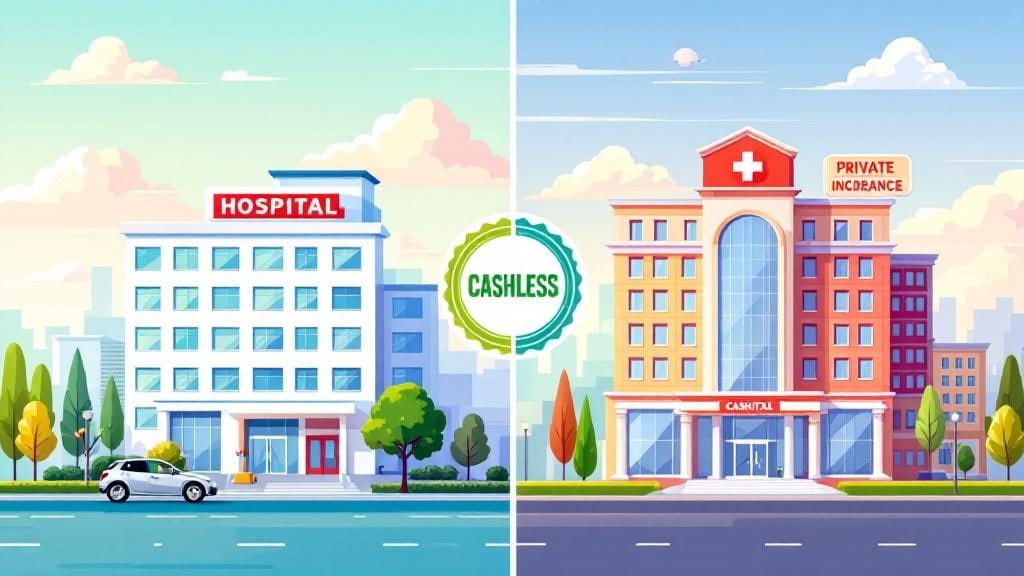In today’s fast-evolving financial landscape, the way we pay has gone fully digital. But when it comes to everyday spending, a common dilemma remains: digital wallet vs debit card—which one truly offers more benefits?
Whether you’re shopping online, tapping at a café, or sending money to a friend, both payment methods offer unique perks. But understanding how digital wallets differ from debit cards can help you make smarter, safer, and faster financial decisions.
In this article, we’ll break down the key differences, compare real-life use cases, and help you decide which one suits your lifestyle better.
What Is a Digital Wallet?
A digital wallet, also known as an e-wallet or mobile wallet, is an app-based platform that securely stores your payment information on your smartphone. Think of it as a virtual version of your physical wallet—only smarter and safer.
Popular digital wallets include:
Google Pay
Apple Pay
Samsung Wallet
Paytm, PhonePe (India)
PayPal
With digital wallets, you can:
Make contactless payments
Send and receive money
Store loyalty cards, gift cards, and even tickets
Use UPI transactions (in India)
What Is a Debit Card?
A debit card is a plastic or metal card linked directly to your bank account. When you swipe, insert, or tap it, the money is immediately withdrawn from your balance.
Key features of debit cards:
Works at ATMs for cash withdrawals
Accepted almost everywhere (POS terminals and online)
Comes with a PIN for added security
Issued by banks like SBI, HDFC, Bank of America, Chase, etc.
Digital Wallet vs Debit Card: Key Differences
Let’s compare digital wallet and debit card across the most important features:
| Feature | Digital Wallet | Debit Card |
|---|---|---|
| Form | Mobile app (no physical card) | Physical plastic or metal card |
| Security | High (tokenization, two-factor authentication) | Moderate (PIN-based, magnetic strip or chip) |
| Payments | Tap and pay, online, UPI | Swipe, chip insert, online |
| Requirements | Smartphone + internet | Bank account + issued card |
| Convenience | Ultra-fast, no need to carry a wallet | Reliable but needs card in hand |
| Offline use | Needs internet | Works offline (for POS & ATM) |
| Support for loyalty/rewards | Yes, stored digitally | No, unless linked manually |
Pros and Cons of Digital Wallet vs Debit Card
🔹 Advantages of Digital Wallets
Faster payments: Just tap your phone and go—perfect for contactless payments.
Enhanced security: Uses tokenization and biometric login (fingerprint/Face ID).
All-in-one: Store multiple cards, rewards, tickets, and IDs.
Convenient for online shopping: Auto-fills info for secure online payments.
Perfect for cashless lifestyle: Supports UPI transactions, peer-to-peer transfers.
🔸 Disadvantages of Digital Wallets
Dependent on battery & internet: No charge, no payment.
Limited merchant acceptance in some areas
Learning curve for older adults
🔹 Advantages of Debit Cards
Universally accepted: Works almost everywhere, even in rural areas.
No internet needed: Still works offline and at ATMs.
Direct from bank account: Helps control spending and track transactions.
Safe for high-value offline purchases
🔸 Disadvantages of Debit Cards
Less secure than digital wallets: Vulnerable if card is lost or skimmed.
No tokenization: Card details are directly used in transactions.
Easier to misuse if stolen
Digital Wallet vs Bank Card: Use Cases
Here are some real-life examples showing when to use a digital wallet vs a debit card:
✅ Use a Digital Wallet When:
You’re making a quick mobile payment at a store
Shopping online and prefer secure checkout
You want to avoid touching surfaces (especially post-COVID)
You’re traveling and want a cashless experience
You frequently use fintech solutions like PayPal, PhonePe, Google Pay
✅ Use a Debit Card When:
You need to withdraw cash from an ATM
You’re shopping at places that don’t accept QR codes
Your phone battery is low
You’re booking high-value offline purchases
Digital Wallet vs Debit Card Security: Which Is Safer?
Digital wallets generally offer better security thanks to:
Tokenization: Your card details are replaced with a temporary code.
Two-factor authentication (2FA): Adds a second layer like OTP or biometrics.
No physical exposure: No swiping = lower chance of skimming or theft.
In contrast, debit cards still rely heavily on magnetic strips or chips, which are susceptible to fraud if mishandled.
✅ Pro Tip: Always enable app lock and use fingerprint/face unlock for your digital wallet apps.
Digital Wallet or Debit Card for Online Shopping?
For secure online payments, digital wallets win—hands down.
Why?
They don’t share your card number with the seller.
One-click checkout speeds up your purchase.
Some wallets offer buyer protection (like PayPal).
Debit cards, while convenient, expose your real bank account details. If compromised, your actual money is at risk.
Digital Payment vs Debit Card: The Bigger Picture
Let’s zoom out a bit.
Both digital wallets and debit cards are part of the larger digital payment ecosystem. But digital wallets are evolving much faster—powered by UPI, cashless economy initiatives, and fintech innovation.
In countries like India, UPI has revolutionized payments, and apps like PhonePe or Google Pay dominate small and large transactions alike.
That said, debit cards still play a major role—especially for those not yet comfortable with app-based finance.
Which One Should You Choose?
It’s not a one-or-the-other situation.
Instead, consider this:
| Lifestyle | Best Choice |
|---|---|
| Tech-savvy, urban, mobile-first | Digital Wallet |
| Traditional, prefers physical banking | Debit Card |
| Mixed use, wants full flexibility | Use both strategically |
FAQs: Digital Wallet vs Debit Card
1. What is the main difference between a digital wallet and a debit card?
Answer: A digital wallet is a mobile app that stores your card info securely and allows payments via your phone. A debit card is a physical card linked to your bank account. The key difference is form, security, and how you pay.
2. Is a digital wallet more secure than a debit card?
Answer: Yes. Digital wallets use tokenization and two-factor authentication, making them less prone to fraud compared to debit cards that expose your card number directly.
3. Can I use both a digital wallet and debit card?
Answer: Absolutely! You can add your debit card to a digital wallet and use either depending on the situation. Many people do this for flexibility and convenience.
4. Do all merchants accept digital wallets?
Answer: No. While acceptance is growing, some local shops or small vendors may only accept cash or cards. Always have a backup.
5. Is mobile wallet better for contactless payments?
Answer: Yes. Mobile wallets are specifically designed for tap and pay systems and offer a faster, touch-free experience than traditional cards.
6. Are there any fees for using digital wallets?
Answer: Most digital wallets are free for users. Some may charge fees for currency conversion, instant bank transfers, or business transactions.
7. Which is better for international use—digital wallet or debit card?
Answer: Debit cards (especially global ones like Visa or Mastercard) are more widely accepted abroad. However, digital wallets like Apple Pay or Google Pay work in many countries too.
Final Verdict: Digital Wallet vs Debit Card
In the battle of digital wallet vs debit card, there’s no single winner. It depends on your needs.
For speed, security, and cashless convenience, go digital.
For traditional reliability and universal acceptance, stick with your debit card.
Pro Tip: Link your debit card to a trusted digital wallet and enjoy the best of both worlds.
✅ Key Takeaways
Digital wallets are app-based, fast, and secure.
Debit cards are widely accepted and work offline.
Use digital wallets for mobile payments, online shopping, and cashless lifestyle.
Use debit cards for ATM withdrawals, offline shopping, and backup access.








Comments (0)